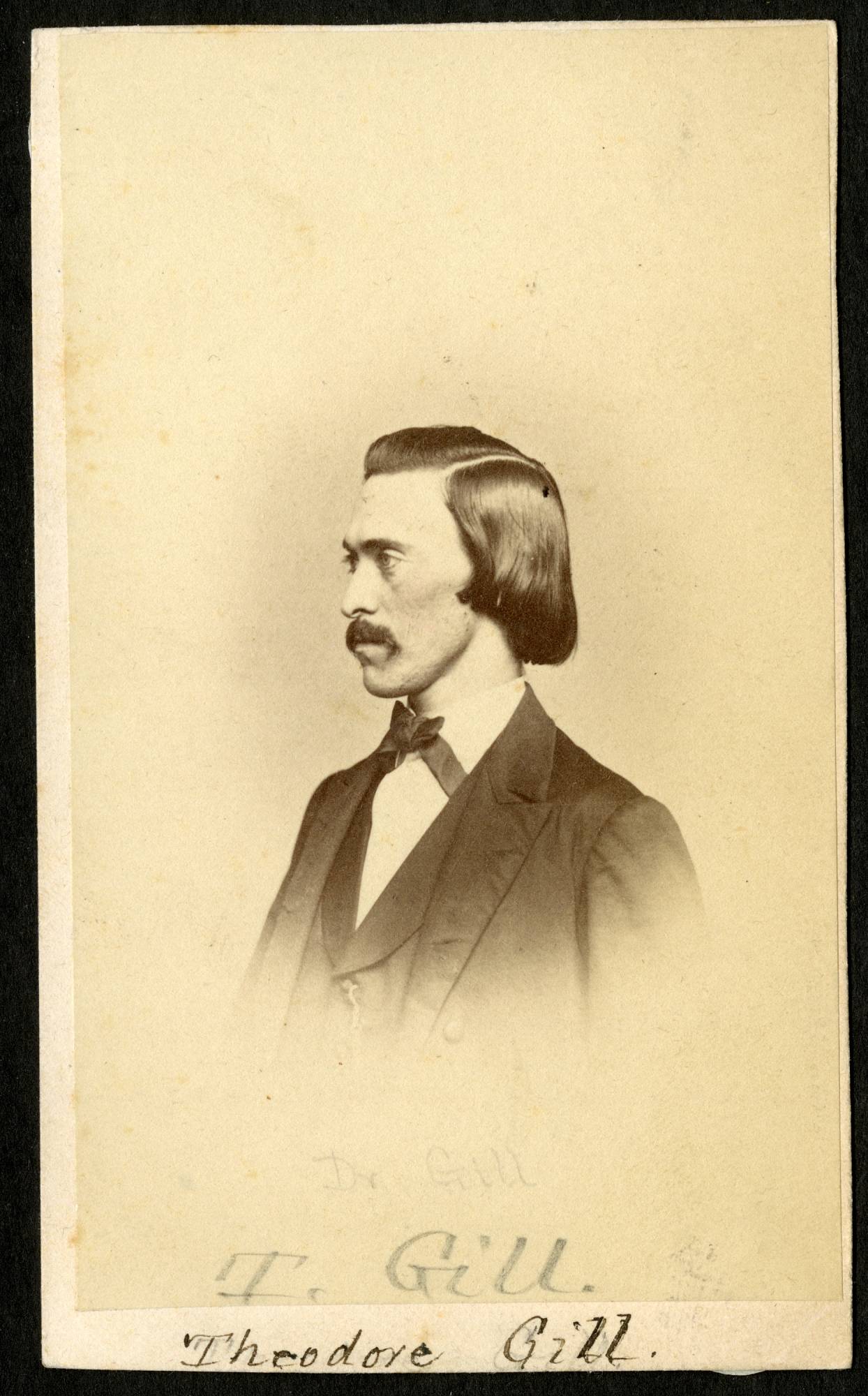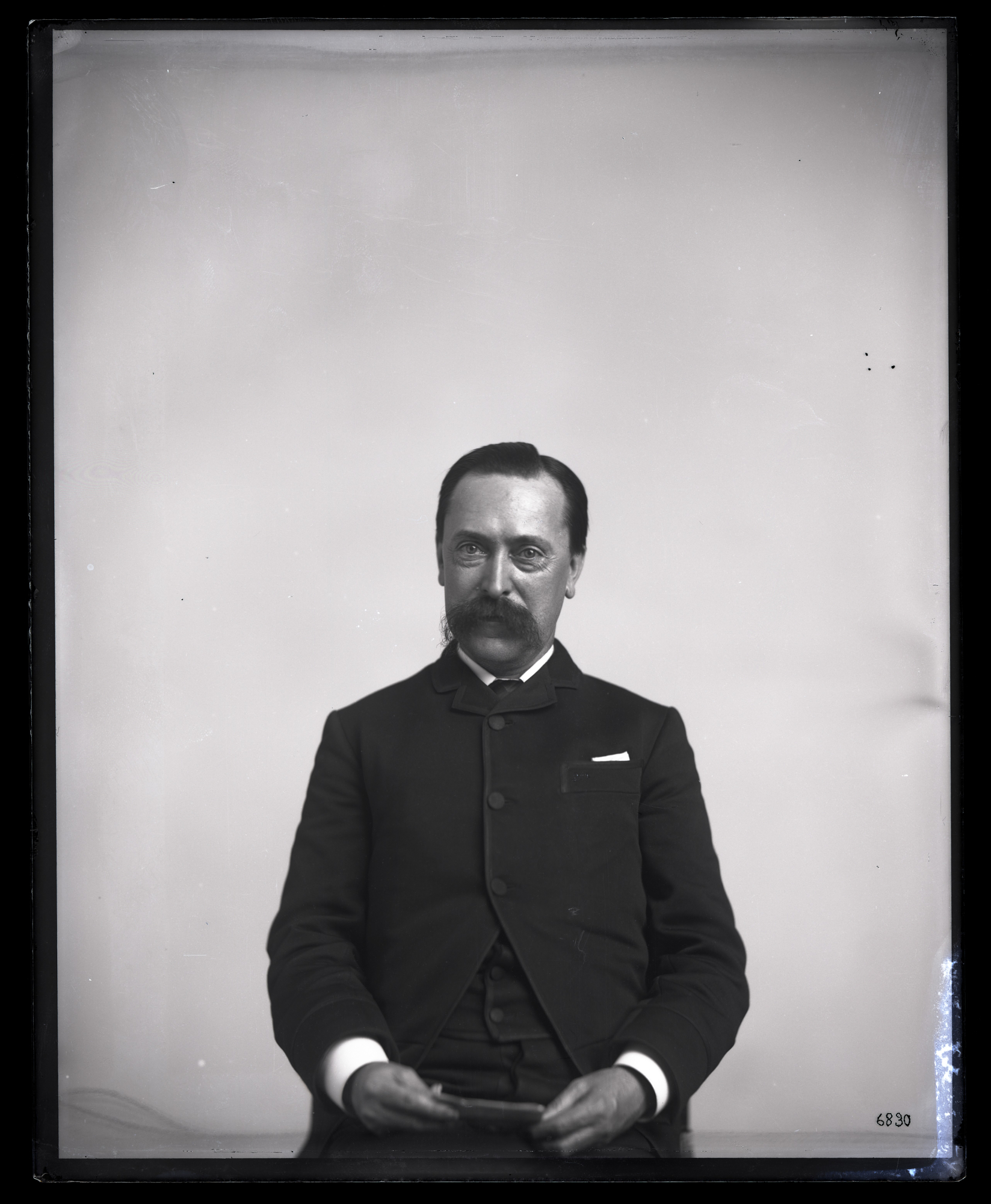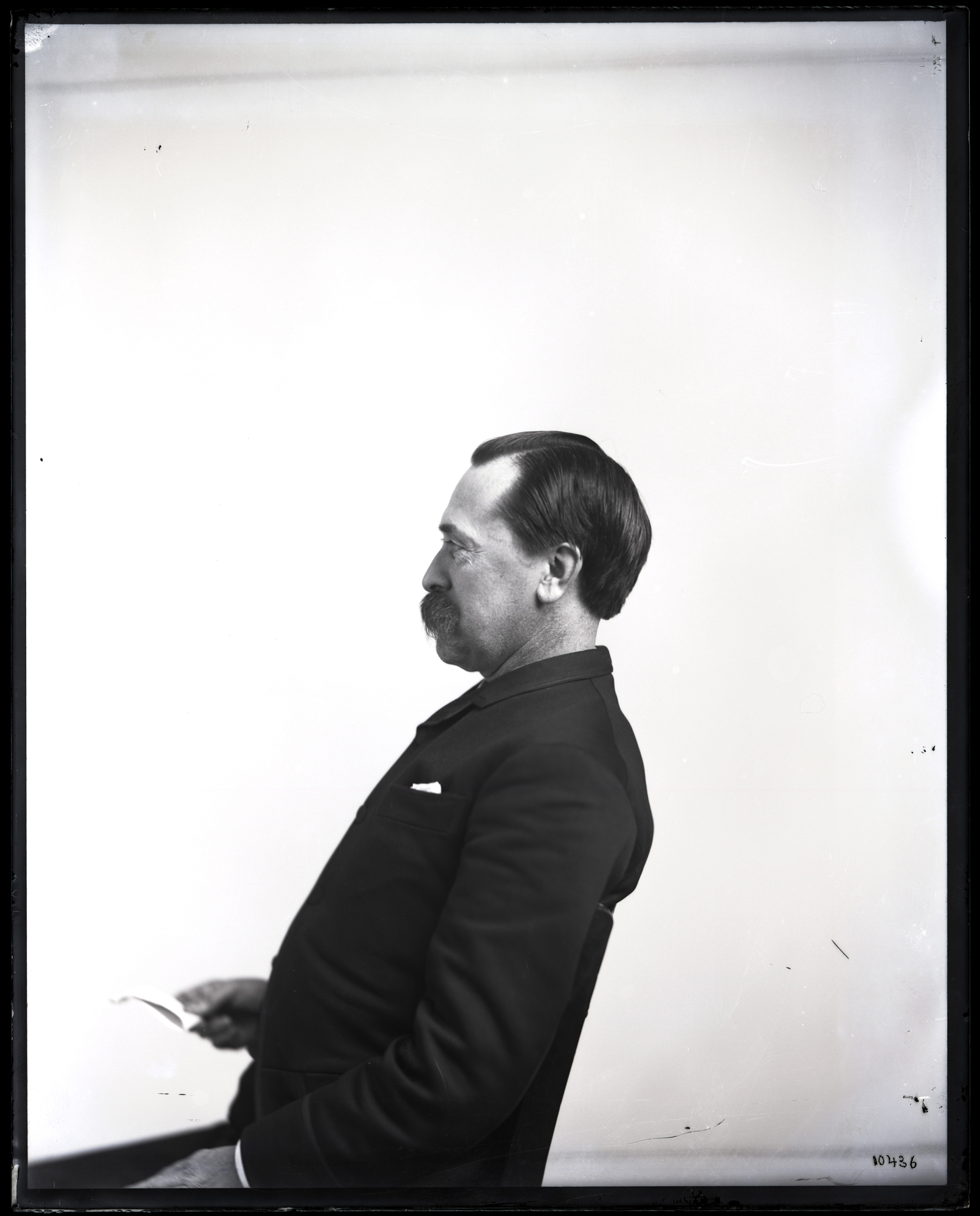Theodore Nicholas Gill
![Theodore Nicholas Gill (1837-1914), Smithsonian Institution Archives, SIA RU000095 [SA-602]. Theodore Nicholas Gill (1837-1914), Smithsonian Institution Archives, SIA RU000095 [SA-602].](https://ids.si.edu/ids/iiif/SIA-SA-602/full/300,/0/default.jpg)
Gill was born on March 21, 1837 and brought up in 164 Grand Street in New York City for most of his life. This area of the city was country-like at the time and exposed Gill to an area with trees and open fields. His frequent visits to the Fulton Fish Market and the port of New York helped spark his interest in ichthyology. Though his father wanted him to become a clergyman, as a position of a naturalist was considered an unstable job, Gill could not shake his passion for water and the fish it contained. He was first convinced to study law and enter the office of S.W. and R. A. Gaines; however, he soon changed his career path with the help of a scholarship from the Wagner Free Institute of Science of Philadelphia. It can be surmised that this scholarship is what allowed Gill to take off in his studies as an ichthyologist.
December 1857 was the first time that Gill stepped foot in Washington, D.C.; it was also the first time he was formally introduced to Professor Henry and Professor Baird. Shortly after, Gill traveled to the Antilles, where he found many new marine fishes and other noteworthy fresh-water fishes in Trinidad. Not wasting much time, Gill returned to D.C. in August, 1858, and lived with William Stimpson in a cottage near the Church of the Epiphany, and continued research.
Gill attempted being a professor at Columbian College in 1860; however, after it was noted that Gill was an “uninspiring lecturer,” he began work at the Smithsonian in 1861. At the Smithsonian, he worked with Fielding B. Meek, Ferdinand Vendeveer Hayden, and Robert Kennicott. Following a year of research, he was put in charge of the Smithsonian’s library, and then made the Assistant (and later Senior Assistant) Librarian of Congress when the collection was moved, due two previous fires at the Castle, into the fireproof rooms of the U.S. Capitol in 1866.
Gill spent most of his days working for the Smithsonian and passed away on September 25, 1914, a few years after suffering a stroke. Robert Kennicott writes in his letter “Folks at Home” that Gill is, “…not the handsomest fellow in the world, yet he’s especially vain of his personal appearance and devotes considerable time to adoring himself and giving ladies and opportunity to admire him! He is not without a good opinion of his intellectual qualities by any means but he prides himself especially upon his personal beauty—Fortunately, he takes any amount of chaffing and laughing at and affords us no end of fun.”
Related Resources
- Folks at Home: February 17, 1863, Robert Kennicott, The Grove National Historic Landmark, Glenview, Illinois
- Spencer Baird and Ichthyology at the Smithsonian: Theodore Nicholas Gill, Smithsonian Institution
- Biographical Memoir of Theodore Nicholas Gill: 1837-1914, William Healey Dall, National Academy of Sciences
- Annual report of Regents of the Smithsonian Institution 1916, Smithsonian Libraries
- History of the Smithsonian Library, Smithsonian Libraries



